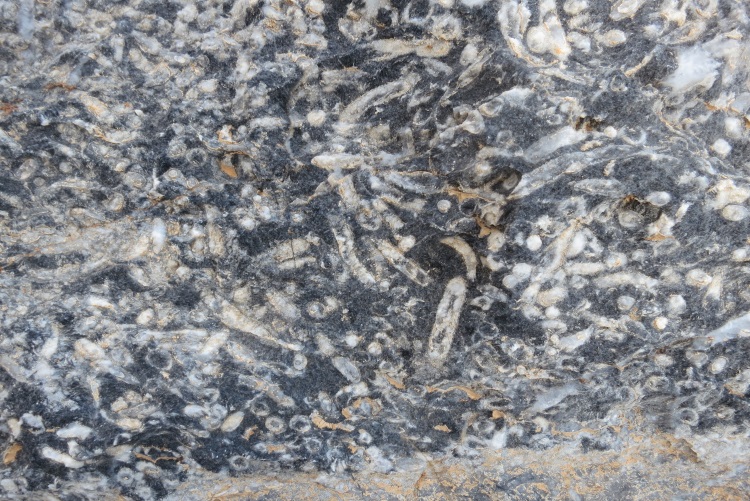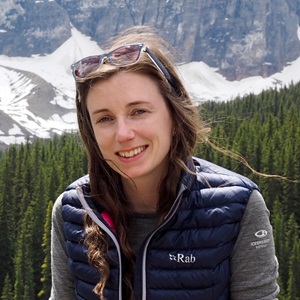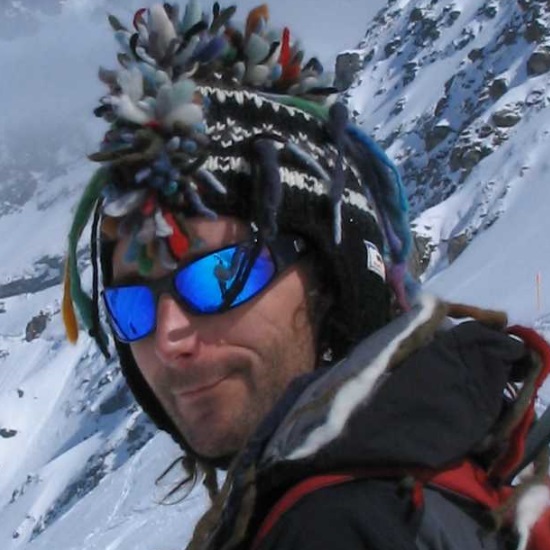Links to external sources may no longer work as intended. The content may not represent the latest thinking in this area or the Society’s current position on the topic.
The origin and rise of complex life: integrating models, geochemical and palaeontological data

Scientific Discussion meeting organised by Professor Rachel Wood, Professor Philip Donoghue FRS, Professor Simon Poulton, Professor Tim Lenton and Dr Alex Liu
Understanding of the triggers and timing of the rise of complex life ~720-520 million years ago has expanded dramatically in recent years. This meeting will integrate diverse and novel geochemical and palaeontological data to create testable hypotheses for the differing roles of changing climate, oceanic redox, nutrient availability, and ecosystem feedbacks, across this profound, but enigmatic, transitional period.
More information on the programme and speakers will be available soon. Speaker abstracts will be available closer to the meeting. Recorded audio of the presentations will be available on this page after the meeting has taken place.
Poster session
There will be a poster session at 17:00 on Monday 9 September. If you would like to apply to present a poster please submit your proposed title, abstract (not more than 200 words and in third person), author list, name of the proposed presenter and institution to the Scientific Programmes team with the subject heading "Complex Life: poster abstract" no later than Friday 9 August 2019 (extended deadline).
Please note that places are limited and posters are selected at the scientific organisers' discretion. Poster abstracts will only be considered if the presenter is registered to attend the meeting.
Attending this event
This meeting is intended for researchers in relevant fields.
- Free to attend
- Limited places, advance registration essential
- An optional lunch can be purchased during registration
Enquiries: contact the Scientific Programmes team
Organisers
Schedule
Chair

Professor Tim Lenton, University of Exeter, UK

Professor Tim Lenton, University of Exeter, UK
Tim Lenton is Director of the Global Systems Institute and Chair in Climate Change and Earth System Science at the University of Exeter. His research focuses on understanding the behaviour of the Earth as a whole system, especially through the development and use of Earth system models. He is particularly interested in how life has reshaped the planet in the past, and what lessons we can draw from this as we proceed to reshape the planet now – as described in his books ‘Revolutions that made the Earth’ (with Andrew Watson) and ‘Earth System Science: A Very Short Introduction’. Tim’s work identifying climate tipping points won the Times Higher Education Award for Research Project of the Year 2008. He has also received a Philip Leverhulme Prize 2004, European Geosciences Union Outstanding Young Scientist Award 2006, Geological Society of London William Smith Fund 2008, and Royal Society Wolfson Research Merit Award 2013.
| 08:05 - 08:30 |
Quantitative reconstruction of Earth’s surface conditions during the rise of complex life
The link between global environmental change and the rise of complex life during the late Precambrian remains uncertain. The time period in question contains two massive 'Snowball Earth' glacial events, and also contains abundant but sporadic evidence for atmospheric and marine oxygenation, but forming a more precise picture of Earth's surface environment through the Neoproteorzoic Era is essential in order to understand whether these conditions might have spurred evolutionary advances, or alternatively may have been a direct result of 'bioengineering' of the environment by new organisms. The evidence for surface system evolution comes from a fantastic suite of geochemical analyses, but these are necessarily limited in time and often tell an incomplete and inherently local story. We can strengthen these analyses by introducing global biogeochemical models: these systems take information about past tectonic and biological processes and produce independent and detailed estimates for changes to the surface environment, which can then be related to the existing analytical databases. Professor Mills will introduce our latest results for the changes in surface temperature and atmospheric oxygen through the Neoproterozoic, question how we might expect marine oxygen levels to change, and discuss the coupling between marine oxygenation and biodiversity. 
Benjamin Mills, University of Leeds, UK

Benjamin Mills, University of Leeds, UKBen is an Academic Fellow at the University of Leeds. He is a mathematician and biogeochemical modeller whose research focuses on the dynamics of the Earth system over geological timescales. He designs and builds computer models to make quantitative predictions for changes in climate and surface geochemistry that relate to both the evolution of the biosphere, and to the planet’s internal geodynamic processes. His key contributions are reconstructions of long-term Phanerozoic climate change, evaluation of the processes by which the atmosphere and oceans have become oxygenated, and determining the causes and consequences of severe ‘Snowball Earth’ glaciations. |
|
|---|---|---|
| 08:30 - 08:45 | Discussion | |
| 08:45 - 09:15 |
Microbial mats and oxygen oases as hotspots for evolution
It is generally accepted that animals first evolved during the Ediacaran Period when the oceans were just becoming fully oxygenated. The best evidence of the first animals include in situ trace fossils that are commonly associated with microbially induced sedimentary structures. The trace fossils generally were formed parallel to the surface of the seabed, at or below the sediment–water interface. This evidence suggests that the earliest mobile animals inhabited settings with high microbial populations, and may have mined microbially bound sediments for food resources, and possibly O2 if the mats were comprised of cyanobacteria. Numerous studies of modern cyanobactertially-dominated mats have further documented that during the day O2 levels in the mats are several times higher than in the overlying water column, in effect serving as oxygen-rich oases. These findings raise the possibility that animal evolution during the Ediacaran could have arisen in similarly O2-rich microbial mats that inhabited an otherwise poorly oxygenated or even anoxic environments. If true, then oxygen availability in sea water may not have played a direct role in the appearance of the first animals, especially considering the apparent existence of cyanobacterial mats as far back in time as 3.2 billion years ago. 
Dr Kurt Konhauser, University of Alberta, Canada

Dr Kurt Konhauser, University of Alberta, CanadaKurt Konhauser is a Professor in Geochemistry and Geomicrobiology at the University of Alberta. His research focuses on mineral-metal-microbe interactions through time, including surface reactivity, biomineralization and biochemical weathering. His current interests are understanding how Earth and photosynthetic life co-evolved in the distant past, specifically the role of bacteria in the precipitation of banded iron formations and the causes for the rise of oxygen on the early Earth. He is a Fellow of the Geochemical Society and the Royal Society of Canada, and was previously a Canada Research Chair in Geomicrobiology. He is the Editor-in-Chief of the journal Geobiology, co-editor of the book Fundamentals of Geobiology, and sole author of the textbook Introduction to Geomicrobiology. |
|
| 09:15 - 09:30 | Discussion | |
| 09:30 - 10:00 | Coffee break | |
| 10:00 - 10:30 |
Sponges and the origin of complex multicellularity
Sponges, morphologically simple animals and likely descendants of the oldest surviving animal lineage, are the key phylum to study the origin of animal multicellularity. Sponge body plan is based on a system of chambers built of collared cells (choanocytes), which propel water and capture food particles. Water, entering the canal system through small pores, is expelled by a larger apical opening (osculum). The outermost epithelium is composed of flat pinacocytes, with diverse motile cells inhabiting the space between the two layers. Morphology and function of choanocytes are reminiscent of choanoflagellates, colonial and single-cell protists, which are the nearest relatives of animals. The combination of similarity and phylogeny implies a choanoflagellate-like ancestor of all animals, and a sponge-like ancestor of all complex animals. The bi-layered body plan of sponges, with the major apical opening, is similar to cnidarian polyps, suggesting transition between poriferan and cnidarian grades of organization, with the endoderm derived from choanoderm, the ectoderm from pinacoderm, and the polyp mouth from the osculum. Recently, gene expression studies – initially of candidate genes, then involving massive single cell transcriptome sequencing – have been used to test these long-standing hypotheses. These studies produced unprecedented insights into cell and developmental biology of sponges, as well as several lineages of protists closely related to animals. However, interpretations of these insights vary widely, and we are far from understanding the events leading to emergence of complex animal multicellularity. Will improvement of sequencing technologies and inclusion of additional model species help shed light on our beginnings? 
Professor Maja Adamska, Australian National University, Australia

Professor Maja Adamska, Australian National University, AustraliaMaja Adamska studied biology in Poland and carried doctoral and postdoctoral research on vertebrate development in Germany and the USA.To gain insight into the origin of the complex developmental mechanisms in vertebrates, she moved to Queensland to analyse developmental signalling pathways in the first sequenced sponge, Amphimedon queenslandica. This work revealed surprising similarities in patterning of sponge and other animal embryos. From 2007 to 2015 Maja was a group leader at the Sars International Centre for Marine Molecular Biology in Norway; and in 2015 moved her lab to the Australian National University. Her group uses calcareous sponges and corals to investigate a variety of biological processes, including segregation of germ layers, axial patterning, skeleton formation, regeneration and symbiosis. Maja is also interested in major transitions in animal evolution, such as emergence of multicellularity and morphological complexity and their relationship to genomic complexity. |
|
| 10:30 - 10:45 | Discussion | |
| 10:45 - 11:15 |
Tracking the evolution of the Neoproterozoic marine biosphere using molecular fossils
Sterane biomarkers preserved in immature ancient sedimentary rocks hold promise for tracking the diversification and ecological expansion of eukaryotes. Bacterial markers dominate biomarker assemblages until the early Neoproterozoic and eukaryotic steranes do not leave a detectable record till ca. 800 Ma and younger, probably due to low environmental abundance of microbial eukaryotes in most marine settings. The earliest proposed animal biomarkers from demosponges (Demospongiae) are recorded in a ca. 100-Myr-long sequence of Neoproterozoic-Cambrian marine sedimentary strata from the Huqf Supergroup, South Oman Salt Basin (Love et al., 2009). This C30 sterane biomarker, informally known as 24-isopropylcholestane (24-ipc), possesses the same carbon skeleton as sterols found in some modern-day demosponges. However, this evidence is controversial because 24-ipc is not exclusive to demosponges since 24-ipc sterols are found in trace amounts in some pelagophyte algae. We recently detected a new fossil sterane biomarker that co-occurs with 24-ipc in a suite of late Neoproterozoic-Cambrian sedimentary rocks and oils, which possesses a rare hydrocarbon skeleton that is uniquely found within extant demosponge taxa. This sterane is informally designated as 26-methylstigmastane (26-mes), reflecting the very unusual methylation at the terminus of the steroid side-chain. These new findings strongly suggest that demosponges, and hence multicellular animals, were prominent in some late Neoproterozoic marine environments at least extending back to the Cryogenian Period. 
Professor Gordon Love, University of California, Riverside, USA

Professor Gordon Love, University of California, Riverside, USAA focus of Dr Love's research program is molecular organic geochemistry, particularly the analysis of stable organic compounds preserved in ancient sedimentary rocks, oils and meteorites. Additionally, he uses a range of complementary stable isotope and inorganic geochemical approaches for understanding carbon and other element biogeochemical cycling in the modern and ancient biosphere. Dr Love continued to use and refine novel analytical approaches that I helped develop with applications in geobiology, astrobiology and organic geochemistry. His degrees were in Chemistry but he developed a curiosity about the environmental and evolutionary history of our planet during his PhD research. After his PhD degree, he was awarded a NERC Fellowship to conduct lipid biomarker research at University of Newcastle then he spent three years at MIT as a Research Fellow. He joined the faculty at University of California, Riverside in 2007 and is currently Professor of Biogeochemistry in the Department of Earth Sciences. |
|
| 11:15 - 11:30 | Discussion |
Chair

Professor Simon Poulton, University of Leeds, UK

Professor Simon Poulton, University of Leeds, UK
Simon Poulton is Chair of Biogeochemistry and Earth History at the University of Leeds, and a Distinguished Professor at the China University of Geosciences-Wuhan. His research interests encompass the application of geochemical, biogeochemical and isotopic techniques to address major issues related to the evolution of Earth’s surface environment. This approach incorporates three major, linked strands – detailed laboratory experiments of key (bio)geochemical and mineralogical processes, studies of biogeochemical cycling in modern redox sensitive environments, and the application of this knowledge to the rock record to illuminate and understand major periods of change through Earth’s history. He is the recipient of a Royal Society Wolfson Research Merit Award, and in 2018 was awarded the Bigsby Medal by the Geological Society of London and the Berner Lecture by the Geochemical Society/European Association of Geochemistry.
| 12:30 - 13:00 |
Assessing the role of oxygen in early animal ecosystems
A hypothesised rise in oxygen levels around the Neoproterozoic–Palaeozoic Boundary has been repeatedly linked to the origin and radiation of early animals. Given that oxygen is required by all extant animals, this hypothesis seems intuitive and has proved rather attractive. But a large body of recent work has shown that the role of oxygen in early animal ecosystems is more complex and dynamic than previously thought. One issue is that geochemical proxies often don’t provide the information needed to address ecologically relevant questions. For example, it is perhaps more important to know which regions of the ocean were anoxic, than how much of the ocean was anoxic. It is also important to know how much oxygen was available in the oxygenated parts of the ocean. Waters containing 100 µM or 1 µM O2 would be indistinguishable in many proxy systems, but the first could host a complex ecosystem containing skeletal animals and motile predators, and the second would be largely uninhabitable. These issues can be partly resolved by considering the systematics of each geochemical proxy, and exactly what information it provides about the redox structure of ancient environments. This talk will focus on the questions we are able to ask using geochemical proxies, and evaluate our current ability to assess the role of oxygen in early animal evolution. 
Dr Rosalie Tostevin, University of Cape Town, South Africa

Dr Rosalie Tostevin, University of Cape Town, South AfricaDr Tostevin is a new lecturer in the Department of Geological Sciences at the University of Cape Town. Previously, she has worked as a postdoc at the University of Oxford and the University of Otago. She completed her PhD at University College London in 2015. She is interested in interactions between life and the environment on the early Earth. Dr Tostevin has worked on tracking major shifts in oceanic redox that occurred in the Precambrian using a variety of geochemical proxies, working closely with paleo-ecologists to tie together the chemical and ecological records. |
|
|---|---|---|
| 13:00 - 13:15 | Discussion | |
| 13:15 - 13:45 |
Real and fake planktonic ecology in silico: using numerical models to explore the marine environmental impacts of the rise of complex life
Species do not live in isolation, but adapt and ultimately, evolve, in relationship with other species as well as with their chemical and physical environment. In the ocean, the surface biogeochemical environment modulates the makeup of the pelagic ecosystem, while the ecological assemblage, in turn, regulates the carbon and nutrient cycles in the ocean and concentration of CO2 in the atmosphere, thus influencing the environment. Evolutionary feedbacks, both negative and positive, must therefore exist between plankton, and global biogeochemical cycles and climate. This has important implications for understanding the rise of complex life and presents a significant challenge to understanding the rock record (what is the geological chicken vs. the egg?). In this talk, Professor Ridgwell will illustrate a theoretical way forward via toy (‘fake’) worlds – aka, numerical models. Specifically, he will present some initial results of some contrasting modelling philosophies, both based on what happens if you incorporate a diverse marine ecology in an Earth system model. In the first example, idealized evolutionary changes in ecosystem structure are prescribed, and the attendant impacts on the marine environment are then simulated – (the chicken is prescribed and the eggs follow?). In the second, the structure and diversity of the ecosystem is allowed to ‘evolve’ in association with the environment. The resulting ecological successions exhibit some real world behavior, and in fact mimic observations of planktic evolutionary recovery in the aftermath of the end Cretaceous impact. The technical challenge is to apply such an approach to ~720-520 million years ago. 
Professor Andy Ridgwell, University of California Riverside, USA

Professor Andy Ridgwell, University of California Riverside, USAAndy Ridgwell is currently Professor of Earth System Science at the University of California, Riverside and Professorial Research Fellow at the University of Bristol, and in a prior incarnation, a Royal Society University Research Fellow. He writes computer models of global carbon cycling and climate, focusing on both past and future controls on the concentration of CO2 in the atmosphere its interaction with life on this planet. His interests span questions of evolution and extinction, causes and consequences of changes in ocean chemistry, and geoengineering of the Earths’ climate. He is a great proponent of computer (programming) literacy and greater accessibility of tools (models) to help understand the complexities (and uncertainties) in the dynamics and evolution of the Earth system. He lives in the Southern Californian mountains where he collects cats and Pokémon. |
|
| 13:45 - 14:00 | Discussion | |
| 14:00 - 14:30 | Coffee break | |
| 14:30 - 15:00 |
Insights into eukaryogenesis from the fossil record
Eukaryogenesis—the steps by which the eukaryotic cell emerged—has long intrigued scientists. The recent discovery of the closely related Asgard archaea has provided new insights into how this might have occurred, but fossils are the only way to reconstruct evolutionary transitions in clades now extinct. Though many cell characters are not preserved, there are at least four crown group characters for which proxy records exist: sterol synthesis (steranes), mitochondria (occurrences of fossils in different redox habitats), the cytoskeleton (fossils with spiny ornamentation), and the capacity to form resistant-walled cysts (the body fossils themselves). We could thus use these records to infer the relative order in which these characters evolved, and the environmental context of their evolution. In this talk I review these records and propose a different scenario for early eukaryote evolution than what is widely assumed. Rather than crown group eukaryotes originating in the late Paleoproterozoic and remaining ecologically minor components for more than half a billion years in a prokaryote-dominated world, the fossil record may point instead to a late emergence of the eukaryote crown group, with cyst formation and the cytoskeleton appearing early, and sterol synthesis evolving late. The origin of mitochondria cannot as easily be pinned down, in part because it’s difficult to reconstruct redox habitats of ancient eukaryotes. However, it is clear from the handful of studies we have that it cannot be assumed early Proterozoic eukaryotes were aerobic. 
Professor Susannah Porter, University of California, Santa Barbara, USA

Professor Susannah Porter, University of California, Santa Barbara, USASusannah received her bachelor's degree in Mathematics from Yale University in 1995 and her Ph.D. in Biology at Harvard University in 2002. After completing a one-year NASA Astrobiology Post-Doctoral Fellowship at UCLA, she moved to the University of California at Santa Barbara, where she is Professor and Vice Chair in the Department of Earth Science. She studies the early fossil record of animals and their protistan relatives and has worked on problems relating to the evolution of skeletal biomineralization, the influence of snowball Earth glaciations on the biosphere, the early evolution of eukaryotes, and the Cambrian diversification of animals. She lives in Carpinteria, California, with her husband, Jamie, and her two sons, Willie and Sam. |
|
| 15:00 - 15:15 | Discussion | |
| 15:15 - 15:45 |
Reconstructing Earth’s oxygenation
Deciphering the role—if any—that oxygen levels played in controlling the timing and tempo of the radiation of complex life is one of the most fundamental questions in Earth and life sciences. Accurately reconstructing Earth’s redox history is an essential part of tackling this question. Over the past few decades, there has been a flood of research applying geochemical redox proxies in an effort to tell the story of Earth’s oxygenation. However, many of these studies have led to conflicting interpretations of the timing and intensity of oxygenation events, even when considering the same isotopic systems. There are two potential explanations for conflicting redox reconstructions—1) that oxygen levels were incredibly dynamic in both time and space or 2) that as a community we have often studied rocks affected by secondary alteration (particularly secondary oxidation). It is an unpopular view to suggest that as a community we have failed to police our own work and it is even more unpopular to directly question the fidelity of individual studies. However, I will make a case that we—researchers interested in understanding the factors controlling the rise of complex life—are currently facing a quality control crisis. I will make a case that secondary alteration is likely widespread in previously published geochemical studies and highlight examples were other communities have faced similar quality control calamities. Lastly, I will argue that proper sample archiving in publicly assessable museums needs to be a prerequisite for publication in all paleoredox studies. 
Dr Noah Planavsky, Yale University, USA

Dr Noah Planavsky, Yale University, USANoah Planavsky is an Assistant Professor in the Department of Geology and Geophysics at Yale University. He studies the connections between the evolution of Earth-system processes, biological innovation, and ecosystem change—foremost in Earth’s early history. His research integrates field, petrographic, and geochemical work. A central theme of his research has been trying to piece together the history and effects of Earth’s oxygenation. He has also worked on reconstructing the evolution of atmospheric carbon dioxide levels through Earth’s history. Current projects include coupling paleoredox proxies, calibrating novel metal isotope systems in modern aqueous systems and disentangling the distribution and diagenetic history of traces metals in sedimentary rocks. |
|
| 15:45 - 16:00 | Discussion | |
| 16:00 - 17:00 | Poster session |
Chair

Professor Rachel Wood, University of Edinburgh, UK

Professor Rachel Wood, University of Edinburgh, UK
Rachel Wood is a palaeontologist and sedimentologist at the University of Edinburgh, with research interests in the evolution of reef ecosystems, the rise of metazoan biomineralisation, palaeobiology of the Ediacaran and Cambrian, and the drivers and consequences of seawater chemistry changes through deep time. She is the author of ‘Reef Evolution’ published by Oxford University Press in 1999. Her research is field-based, and she has worked on Ediacaran-Cambrian strata worldwide, particularly in Siberia and Namibia. In 2018, she was the recipient of the Johannes Walther Medal from the International Association of Sedimentologists, awarded to scientists at any stage in their career who are considered to have made a significant impact in the field of sedimentology.
| 08:00 - 08:30 |
The environmental and ecological context of the rise of the Ediacara Biota
The advent and evolution of complex life on Earth is interpreted largely from the fossils of the Precambrian soft-bodied Ediacara Biota, which appeared and evolved during a time of dynamic biogeochemical and environmental fluctuation in the global ocean. The Ediacara Biota is historically divided into three successive Assemblages—the Avalon, the White Sea, and the Nama—which are marked by the appearance of novel biological traits and ecological strategies. Recent research on all three assemblages at multiple localities has begun to clarify the significance of the Ediacara biota to our understanding of the development of Phanerozoic and Modern ecosystems. Heterogeneous seafloors – or patchiness – was on par with modern oceans during the reign of the Avalon assemblage and continued through the White Sea Assemblage. This unusually variable diversity-abundance structure is likely due both to their preservation as near-snapshots of benthic communities and to original ecological differences, in particular the paucity of motile taxa and the near-lack of predation and infaunalization. The younger White Sea and Nama Assemblages further record a “second wave” of ecological innovations, including the development of bilaterian-grade animals and Phanerozoic-style ecological innovations, such as scavenging, complex reproductive strategies, increased ecospace utilization and motility. Evidence from both the fossil record as well as geochemical data suggests that there was an extinction of some taxa between the White Sea and Nama assemblages. However, emerging data suggests that a number of Ediacaran body plans survived into the Cambrian. 
Professor Mary Droser, University of California, Riverside, USA

Professor Mary Droser, University of California, Riverside, USAMary Droser is a Professor of Geology at the University of California, Riverside. Her research is in the area of evolutionary paleoecology. She has worked up and down the geologic time scale on issues related to environmental controls on faunal assemblages but in the last near 20 years has worked extensively on the Ediacaran of South Australia. |
|
|---|---|---|
| 08:30 - 08:45 | ||
| 08:45 - 09:15 |
Clay minerals and the fossilisation of early complex life
Proterozoic fossils provide the only direct evidence of early eukaryotic life. Yet they are rare, restricted to rocks where non-biomineralised remains are conserved. Compilations of Proterozoic eukaryotic fossil occurrences suggest most are found in mudstones—a clay-rich lithology known for iconic Cambrian soft-tissue fossilisation (Burgess Shale-type [BST]). Here we compare the role of clays in Cambrian BST and Proterozoic fossilisation. Experimental data suggest both berthierine and kaolinite are toxic to decay-bacteria and may promote fossilisation. X-ray diffraction (XRD) confirms BST fossils are found in rocks rich in berthierine. Moreover, novel selected-area XRD shows kaolinite to be intimately associated with BST fossil tissues. Its association with these tissues hints at early clay-organic interactions that likely promoted organic polymerisation. XRD of a similar compilation of Proterozoic fossil bearing shales reveals a contrasting pattern. Fossils with the highest preservation quality are associated with high illite content versus berthierine, suggesting that the main fossilisation control may be burial rate rather than clay mineralogy, and that most Proterozoic microfossils do not require BST conditions for fossilisation—likely a function of algae and protists being more resistant to decay than Cambrian animals. However, elemental/mineral distributions over cross-sections of fragile eukaryotic fossils and surrounding matrix from three Proterozoic localities reveal kaolinite enrichments adjacent to fossil cell-walls, similar to the association between kaolinite and BST fossils. These data suggest the conditions for Proterozoic fossilisation might be more ubiquitous than previously thought. However, to fossilise delicate forms, a small subset of Proterozoic fossil localities exhibit characteristics of BST fossilisation. 
Dr Ross P Anderson, University of Oxford, UK

Dr Ross P Anderson, University of Oxford, UKRoss Anderson is a palaeobiologist at All Souls College, Oxford. He uses fossils to chart the evolution of early complex life through the Proterozoic Eon (2.5–0.5 billion years ago). Understanding how changing fossil diversity correlates to environmental changes - and the Proterozoic Eon sees some of the largest in Earth’s history - is vital to determining evolutionary drivers. Not only does he seek new fossils that provide this important palaeobiological information, he critically interrogates the nature of the fossil record. Before the terminal Proterozoic advent of biomineralisation, fossilisation is confined to poorly understood and unusual circumstances that preserve organic remains. Anderson uses novel analytical techniques on fossiliferous strata to understand the conditions conducive to preservation. Such research is crucial to our ability to robustly interpret the temporal and ecological range of early fossil organisms. It can also provide new insights into their original chemistry and biology. |
|
| 09:15 - 09:30 | Discussion | |
| 09:30 - 10:00 | Coffee break | |
| 10:00 - 10:30 |
The rise of bioturbation: tracking and modelling the development of the sedimentary mixed layer
Bioturbation—sediment mixing by burrowing animals—critically shapes seafloor ecology and sediment properties, as well as global marine biogeochemical cycling. Observation of strong bioturbation-biogeochemical feedbacks in modern marine environments suggests that the evolutionary development of bioturbation should have profoundly impacted contemporaneous biogeochemical (e.g., C, P, O and S) cycling. Stratigraphic archives indicate that the early Palaeozoic development of bioturbation was a protracted process, and that the appearance of intensively and deeply mixed sediments lagged significantly behind relatively early advances in infaunal seafloor colonization. Recent modelling work has suggested that even limited bioturbation may nonetheless have initiated an early Palaeozoic productivity crisis and ocean-wide deoxygenation. However, the precise biogeochemical impact of early Palaeozoic bioturbation has remained debated. To further address this question, I explore a new and more fully parameterized multi-component reaction-transport diagenetic model. This approach indicates that the relationship between bioturbation and both C-P-O and S cycling is complex and non-linear, and that not only intensity but style of bioturbation (e.g., biodiffusion vs. bioirrigation) influence the magnitude of P recycling and S oxidation. In this light, early Palaeozoic bioturbation—which was likely bioirrigation-dominated and characterized by relatively muted and shallow biodiffusional sediment mixing—may have initially only weakly influenced net S oxidation, while simultaneously mediating increased P recycling. Moreover, porosity—a parameter that, although rarely explored in diagenetic models, is substantially impacted by bioturbation—strongly influences both these systems. Lastly, in contrast to previous studies, I find that bioturbation amplifies the sensitivity of the coupled C-P-O cycle to environmental perturbations. 
Dr Lidya Tarhan, Yale University, USA

Dr Lidya Tarhan, Yale University, USADr Lidya Tarhan is a paleontologist and sedimentologist in the Department of Geology and Geophysics at Yale University. Her research is centered on using the sedimentary record to develop a multidisciplinary understanding of the co-evolution of ancient life and environments during critical intervals in Earth’s history, while jointly exploring fossilization processes and the manner in which preservational biases modify the stratigraphic record. Her recent work has focused on the radiation of complex macroscopic and multicellular life, including the enigmatic Ediacara Biota, as well as the emergence of early animals as ecosystem engineers, including the timing and geobiological consequences attending the rise of bioturbation. She additionally investigates animal-sediment interactions in modern marine environments. Her research combines a field-based sedimentological and paleoecological approach with a geochemical and modeling toolkit. |
|
| 10:30 - 10:45 | Discussion | |
| 10:45 - 11:15 |
Survivorship and selection bias in the Cambrian explosion and their role in its structure
Big evolutionary events such as the Cambrian Explosion have inspired many attempts at explanation – why do they happen when they do? What shapes them, and why do they eventually come to an end? Or, more generally, simply what causes them? However, much less attention has been paid to the idea of a “null hypothesis” – that certain features of such diversifications arise simply through their statistical structure. When we look back from our own perspective to the origins of large groups such as the arthropods, or even the animals themselves, we will see many features that look causal but are in fact inevitable. For example, such large clades tend to be characterised by a burst of morphological innovation at their base, which has then often (and arguably invalidly) been used as an explanation for the subsequent success of the group (the “key innovations” concept). This is not necessarily to say that such events do not have causes, but that we need to be rather careful in trying to understand what it is we can actually determine merely from the patterns we see in the fossil record. Typical sorts of features that might be affected by such biases include the early rates of diversification (the so-called “push of the past”), the rate of establishment of “body plans” and the overall timing of such events. The Cambrian explosion exemplifies many of these issues, and understanding them is therefore essential to perceiving what its fossil record may (and may not) be telling us. 
Professor Graham Budd, Uppsala University, Sweden

Professor Graham Budd, Uppsala University, SwedenGraham Budd (b. 1968) studied at the University of Cambridge, UK, where he completed a PhD under the supervision of Professor Simon Conway Morris FRS (Cambridge) and Professor John S Peel (Copenhagen) on the topic of exceptionally-preserved Cambrian arthropods from Greenland. Since 1994 he has worked in the Department of Earth Sciences of Uppsala University, Sweden where he is currently professor of evolutionary palaeobiology. Current research interests include the early evolution of animals with particular interest in arthropods, the evolution of complex systems and the evolution of development. |
|
| 11:15 - 11:30 | Discussion |
Chair

Dr Alex Liu, University of Cambridge, UK

Dr Alex Liu, University of Cambridge, UK
Alex Liu is a palaeobiologist whose work explores the fossil and sedimentological records of the late Neoproterozoic, with a specific focus on the Ediacaran macrobiota and their relevance to early animal evolution. He graduated with undergraduate and DPhil degrees in Earth Sciences from the University of Oxford, before holding a Research Fellowship at the University of Cambridge, and a NERC Independent Research Fellowship at the University of Bristol. He was appointed to his current role as University Lecturer in the Department of Earth Sciences, University of Cambridge, in 2016.
| 12:30 - 13:00 |
Ediacaran stratigraphy and global correlation
The Ediacaran Period (635-541 Ma) was a critical time interval witnessed of unprecedented change in the Earth system from the late Cryogenian snowball Earth glaciation to the Cambrian explosion of animals. Despite intense studies in past two decades, efforts to subdivide the Ediacaran Period has faltered due to a lack of robust global correlation tools, thus different chronostratigraphic models have proposed. Consequently, the uncertainty of the Ediacaran chronostratigraphic framework has severely hampered our understanding of the causal relations between the evolution of complex life and changes of the global climates and seawater chemistry in this critical interval of the Earth history. Beginning with an introduction of the current status of the global Ediacaran time scale, this presentation will review recent advances and problems in the investigation of the Ediacaran stratigraphy of South China, one of the key and intensively investigated areas in the world, focusing on correlation and age constrains of the carbon isotope excursions from sections in various facies, in particular the debate about the DOUNCE excursion. Through integrate approach, the presentation will attempt to testify different correlation models of the global Ediacaran stratigraphy, particularly the synchronicity of the DOUNCE/Shuram/Wonoka excursions and diachronous occurrence of the late Ediacaran glaciations worldwide. 
Professor Maoyan Zhu, Chinese Academy of Sciences, China

Professor Maoyan Zhu, Chinese Academy of Sciences, ChinaMaoyan Zhu studied geology and paleontology at the Changchun College of Geology (now Jilin University), and received his PhD in 1992 at the Nanjing Institute of Geology and Palaeontology, Chinese Academy of Sciences, where he became professor in 1998. He is voting members of the Ediacaran and Cambrian subcommissions (ICS), and chair of the international working group on the base of the Cambrian. He was awarded the Group Prize of Brilliant Contribution (Qiu Shi Sciences & Technologies Foundation, 1997), CAS Hundred Talents (1998), Distinguished Young Scholars (NSFC, 2007), Yin Zanxun Award (Palaeontological Society of China, 2009) and international corresponding member of Academy of Science Göttingen (2013). His research interests focus on the origin and early evolution of multicellular organisms and animals, Neoproterozoic-Cambrian stratigraphy and palaeo-environmental changes through integrated approach. Currently, he act as a Chinese leader of the NERK-NSFC co-funded project entitled Perturbation of the Earth System at the Proterozoic-Phanerozoic transition and the resilience of the biosphere (BETR). |
|
|---|---|---|
| 13:00 - 13:15 | Discussion | |
| 13:15 - 13:45 |
Developing a spatio-temporal scaffolding for the integration of data and data-model comparison

Dr Daniel Condon, British Geological Survey, UK

Dr Daniel Condon, British Geological Survey, UK |
|
| 13:45 - 14:00 | Discussion | |
| 14:00 - 14:30 | Coffee break | |
| 14:30 - 15:00 |
Everything about Neoproterozoic environmental changes and animal evolution (except for oxygen)
Animals originated and evolved during a unique time in Earth history – the Neoproterozoic Era. Considering environmental conditions, geochemical data have long suggested that animals evolved in a relatively low oxygen ocean. Here, we present new analyses of sedimentary total organic carbon contents in shales suggesting that the Neoproterozoic ocean may also have had lower primary productivity – or at least lower quantities of organic carbon reaching the seafloor – compared with the Phanerozoic. Indeed, recent modeling efforts suggest that low primary productivity is an expected corollary of a low-O2 world. Comparing animal ecological responses across natural gradients of both food supply and oxygen levels in the modern ocean reveals obvious similarities, suggesting that precise causality could be difficult to infer if both food supply and oxygen changed in lockstep. In this light, we propose the fire triangle metaphor for environmental influences on early animal evolution. Moving toward consideration of all metabolically important aspects of the Cambrian radiation (fuel, heat, and oxidant) will ultimately lead to a more holistic view of the event. In particular, given the effects of temperature on animal metabolism (‘temperature-dependent hypoxia’), the role of oxygen in early animal evolution cannot be considered independent of temperature. Trait-based ecophysiological frameworks are consequently explored as a pathway to understand the impact of multiple environmental parameters on early animal communities. 
Professor Erik Sperling, Stanford University, USA

Professor Erik Sperling, Stanford University, USAProfessor Sperling's research interests are Earth history and the evolution of life, and the interactions between the biosphere and the geosphere. As such this research can generally be considered paleontology, insofar as paleontology encompasses all aspects of the history of life. His research incorporates multiple lines of evidence, and multiple tools, to investigate questions in the history of life. These lines of evidence include fossil data, molecular phylogenetics, sedimentary geochemistry, and ecological and physiological data from modern organisms. Ultimately, the goal is to link environmental change with organismal and ecological response through the lens of physiology. |
|
| 15:00 - 15:15 | Discussion | |
| 15:15 - 16:00 | Panel discussion |

